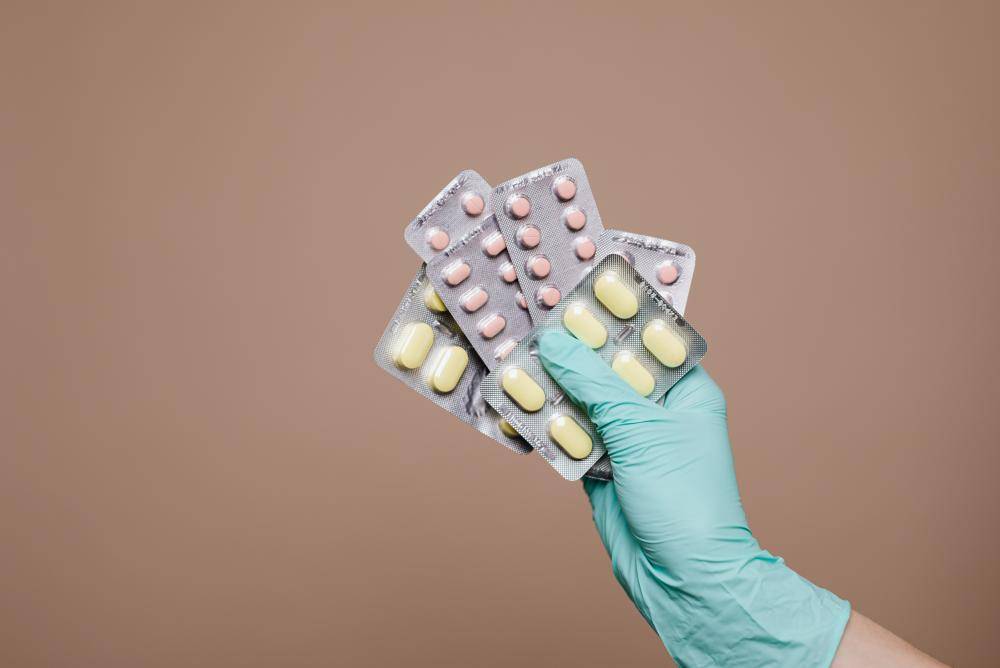1.Introduction:
The prevalence of cardiovascular illness is thought to be mostly due to hypertension (HTN), which is one of the main causes. A systolic blood pressure less than 130 mm Hg is proven to prevent complications in people with heart failure, diabetes, coronary artery disease, stroke, and other cardiovascular disorders. Reducing blood pressure does minimize cardiovascular risks.
In the United States, about 43 million persons (over 18) suffer with hypertension. [1] Only 24% of them had their blood pressure (BP) managed (systolic BP 140 and diastolic BP 90mm Hg), despite 52% of them receiving pharmaceutical treatment. Antihypertensive medication side effects are thought to affect between 20 to 97% of patients [2, 3]. Medication side effects are a common occurrence, and high blood pressure (HBP) treatments are no exception.
However, many people who take medications for hypertension do not experience any adverse effects, or if they do, they are typically minor. Concerns about possible side effects of medication in hypertensive patients may lead to lack of motivation to adhere to treatment. [4] Comparing individuals taking diuretics and beta-blockers to those taking other antihypertensive medications, it appears that adverse effects are more common and adherence is worse. [5]
Health care professionals are advised to use extra vigilance while monitoring medication adherence and potential negative side effects because antihypertensive cover a wide range of drugs. Cardiovascular disease can be prevented by treating HTN, and selecting the right drug class is crucial to getting the right control with the fewest side effects. In this paper, we looked into the adverse effects of antihypertensive medications in light of earlier studies.
2. Indications
One of the main contributors to the rise in cardiovascular illness is hypertension (HTN).
The 2017 definition of HTN phases by the American College of Cardiology (ACC) and American Heart Association (AHA) is as follows:
● Systolic and diastolic blood pressure (BP) should be less than 120 and 80 respectively to be considered normal.
● Systolic blood pressure is greater than 120 and diastolic blood pressure is less than 80.
● Systolic or diastolic blood pressure of 130 to 139 is indicative of stage 1 HTN.
● SYSTOLIC BP AT LEAST 140 OR DIASTOLIC BP AT LEAST 90 DEFINES STAGE 2 HTN.
● SYSTOLIC BP OVER 180 AND/OR DIASTOLIC BP OVER 120 DEFINES A HYPERTENSIVE CRISIS.
Antihypertensive drugs come in many different types, but the ones that are most frequently used as first-line treatments for HTN include:
● thiazide-type diuretics;
● calcium channel blockers;
● angiotensin-converting enzyme (ACE) inhibitors;
● and angiotensin II receptor blockers (ARBs)
3. Adverse Effects
● Thiazides side effects
Many negative effects are linked to thiazide and thiazide-like diuretics. Hypokalemia and hyponatremia are the most frequent metabolic side effects, followed by hyperuricemia, hypomagnesemia, hyperlipidemia, and elevated glucose levels. The majority of these side effects are directly related to the diuretic dose. [6][7]
According to a study, older patients on chlorthalidone have a higher risk of being hospitalised for severe hypokalemia. Sexual dysfunction and sleep disturbance are additional adverse effects that are not dose-related.
● CCB side effects
Peripheral edoema is frequently linked to dihydropyridine CCB therapy. When compared to amlodipine, long-acting nifedipine is linked to a higher incidence of edoema; the edoema is correlated with the dose of the CCB. It has nothing to do with fluid or sodium retention, heart failure, or sodium retention. [8] Diuretics treatment does not help CCB-induced edoema because it is not caused by volume gain; nevertheless, when CCBs are used with ACE inhibitors or ARBs, there is a reduced likelihood of peripheral edoema from occurring. Lightheadedness, flushing, headaches, and gingival hyperplasia can all be brought on by dihydropyridines. [9]
Non-dihydropyridines can produce constipation in 25% of patients and are linked to bradycardia. When administering CCBs to elderly patients or those who have a high risk of bleeding, caution is advised because they suppress platelet aggregation and are linked to an increased risk of gastrointestinal bleeding.
● ACE is and ARBs side effects
Cough, hypotension, weariness, and azotemia are the most frequent adverse effects of ACE inhibitors. Reversible renal impairment is another frequent side effect, particularly if the patient experiences volume depletion as a result of diarrhoea or vomiting.
Up to 20% of people taking ACE inhibitors may experience coughing. The cough doesn't go away for up to 14 to 28 days after stopping the medication. Losartan and hydrochlorothiazide exhibited a similar rate of cough when compared; the incidence of cough is less common with ARB treatment.
ARBs are safe to use in people with asthma; compared to CCBs, candesartan did not increase the frequency of cough in people with asthma. When compared to telmisartan, ramipril showed a greater risk of cough occurrence. [14] Mild hyperkalemia is frequently seen with ACE inhibitor therapy. Those with renal failure, diabetes, or CHF have a higher chance of developing hyperkalemia than those with good renal function. [43] In terms of the likelihood of experiencing syncope, acute renal damage, and hyperkalemia, ramipril and telmisartan are comparable. However symptomatic hypotension is more frequently reported with telmisartan. [10]
ARBs are less likely than ACE inhibitors to cause angioedema, a rare adverse effect of ACE inhibitors that occurs in 0.3% of patients taking ramipril.
ARBs were associated with a lower frequency of angioedema and cough in Black patients.[11]
Beta-blockers: Among their frequent side effects include bradycardia, constipation, exhaustion, depression, and sexual dysfunction. They also contribute to bronchospasm and aggravating peripheral vascular disease symptoms. These might make Raynaud's syndrome worse. [12]
Loop diuretics: primarily hypokalemia, hyponatremia, hypomagnesemia, and hypochloremia are linked to electrolyte imbalance.[13] Dehydration, hyperuricemia, and hyperlipidemia are other metabolic side effects. Treatment with loop diuretics may result in ototoxicity and hearing loss. [14]
Mineralocorticoid receptor antagonists have the following side effects: The main adverse effect of this class of drugs is hyperkalemia. These can produce metabolic acidosis because hydrogen ions aren't working as hard. Men can experience erectile problems and gynecomastia, and women can experience irregular menstrual cycles.
Hydralazine: Due to the sympathetic nervous system stimulation, hydralazine can cause headaches, flushing, palpitations, dizziness, hypotension symptoms, and dizziness. [15] Hemolytic anaemia, various immunological problems, and drug-induced lupus erythematosus are linked to it.
Clonidine: Drowsiness, headaches, dizziness, irritability, nausea, vomiting, constipation, upper abdomen pain, and bradycardia are some of the more typical adverse effects of clonidine. Nevertheless, more significant side effects such angioedema, atrioventricular block, and severe hypotension can also happen.[16]
Hirsutism is connected to minoxidil. [17]
Due to venous dilatation, alpha-blockers are linked to tachycardia and orthostatic hypotension. [18]
Adrenergic Peripheral Inhibitors By blocking neurotransmitters in the brain, this kind of drug prevents smooth muscles from receiving the signal to constrict. These drugs, which are used less frequently than other high blood pressure medications, can result in diarrhoea, erection issues, heartburn, stuffy nose, dizziness, lightheadedness, or weakness while getting up in the morning or suddenly standing up.
4.Inhibitor of Renin
This more recent generation of high blood pressure drugs functions by reducing the substances that constrict blood arteries. This medication can be taken either by itself or in conjunction with other drugs. among the negative effects: Rash, heartburn, diarrhoea, or stomach ache.
5.Monitoring
The monitoring of patients using these medications calls for an interprofessional team composed of doctors, nurses, and pharmacists.
The antihypertensive regimen is started by the clinician; next, the pharmacists should pay close attention to the patient's compliance with therapy, drug-drug interactions, and medication reconciliation. The nurse is crucial in ensuring that the patient adheres to the treatment plan and identifying any obstacles to a positive outcome. This includes keeping track of the patient's nutrition and activity levels as well as their home environment.
Nurses who come to your home will check your blood pressure and heart rate as you respond to your therapy and look out for any early side effects. Any potential issues with adherence, adverse reactions, or alterations to the home setting should be brought up with the clinician by the pharmacist and the nurse. This thorough interprofessional team effort contributes to achieving the maximum benefits benefits of the regimen and the best care delivery to the patient and family.
Reference:
1. Franklin SS, Jacobs MJ, Wong ND, L’Italien GJ, Lapuerta P . Predominance of isolated systolic hypertension among middle-aged and elderly US hypertensives: analysis based on National Health and Nutrition Examination Survey (NHANES) III . Hypertension 2001. ; 37 : 869 – 874
2. Toyoshima H, Takahashi K, Akera T . The impact of side effects on hypertension management: a Japanese survey . Clin Ther 1997. ; 19 : 1458 – 1469.
3. Bardage C, Isacson DG . Self-reported side-effects of antihypertensive drugs: an epidemiological study on prevalence and impact on health-state utility . Blood Press 2000. ; 9 : 328 – 334.
4. Morgan M, Watkins CJ . Managing hypertension: beliefs and responses to medication among cultural groups . Sociol Health Illn 1988. ; 10 : 561 – 78.
5. Kronish IM, Woodward M, Sergie Z, Ogedegbe G, Falzon L, Mann DM . Meta-analysis: impact of drug class on adherence to antihypertensives . Circulation 2011. ; 123 : 1611 – 1621.
6. Leung AA, Wright A, Pazo V, Karson A, Bates DW. Risk of thiazide-induced hyponatremia in patients with hypertension. Am J Med. 2011 Nov;124(11):1064-72.
7. Akbari P, Khorasani-Zadeh A. StatPearls [Internet]. StatPearls Publishing; Treasure Island (FL): May 1, 2022. Thiazide Diuretics.
8. Carey RM, et.,al. American Heart Association Professional/Public Education and Publications Committee of the Council on Hypertension. The American Heart Association. Hypertension. 2018 Nov;72(5):e53-e90.
9. McKeever RG, Hamilton RJ. StatPearls [Internet]. StatPearls Publishing; Treasure Island (FL): Jul 11, 2022. Calcium Channel Blockers.
10. ONTARGET Investigators. Yusuf S, Teo KK, Pogue J, Dyal L, Copland I, Schumacher H, Dagenais G, Sleight P, Anderson C. Telmisartan, ramipril, or both in patients at high risk for vascular events. N Engl J Med. 2008 Apr 10;358(15):1547-59.
11. Whelton PK, Carey RM, et.,al. 2017 ACC/AHA/AAPA/ABC/ACPM/AGS/APhA/ASH/ASPC/NMA/PCNA Guideline for the Prevention, Detection, Evaluation, and Management of High Blood Pressure in Adults: A Report of the American College of Cardiology/American Heart Association Task Force on Clinical Practice Guidelines. Hypertension. 2018 Jun;71(6):e13-e115.
12. Farzam K, Jan A. StatPearls [Internet]. StatPearls Publishing; Treasure Island (FL): Jul 21, 2022. Beta Blockers.
13. Huxel C, Raja A, Ollivierre-Lawrence MD. StatPearls [Internet]. StatPearls Publishing; Treasure Island (FL): Jul 17, 2022. Loop Diuretics.
14. Sica DA, Carter B, Cushman W, Hamm L. Thiazide and loop diuretics. J Clin Hypertens (Greenwich). 2011 Sep;13(9):639-43.
15. Herman LL, Bruss ZS, Tivakaran VS. StatPearls [Internet]. StatPearls Publishing; Treasure Island (FL): Jun 5, 2022. Hydralazine.
16. Yasaei R, Saadabadi A. StatPearls [Internet]. StatPearls Publishing; Treasure Island (FL): Jul 19, 2022. Clonidine.
17. Badri T, Nessel TA, Kumar D D. StatPearls [Internet]. StatPearls Publishing; Treasure Island (FL): Dec 19, 2021. Minoxidil.
18. LiverTox: Clinical and Research Information on Drug-Induced Liver Injury [Internet]. National Institute of Diabetes and Digestive and Kidney Diseases; Bethesda (MD): Jan 8, 2018. Alpha 1 Adrenergic Receptor Antagonists.
WRITTEN BY CHECKME
Related Blogs
Recommended Products
Subscribe for special promotions,
healthy knowledge, and more!





